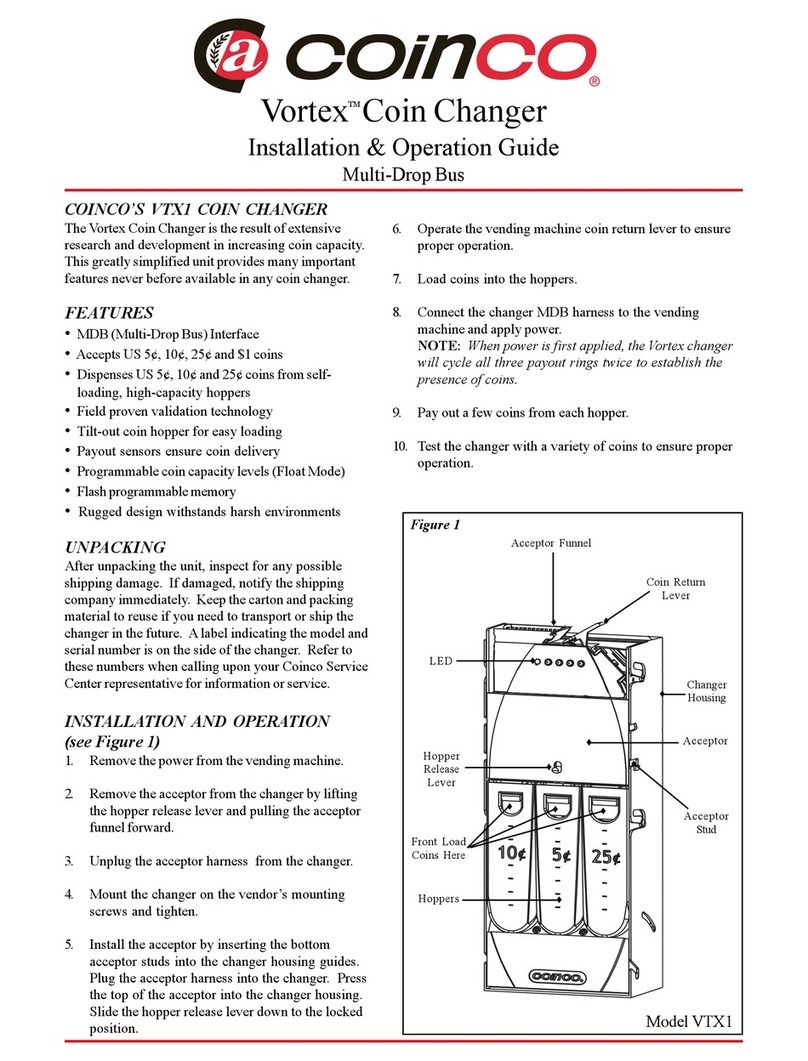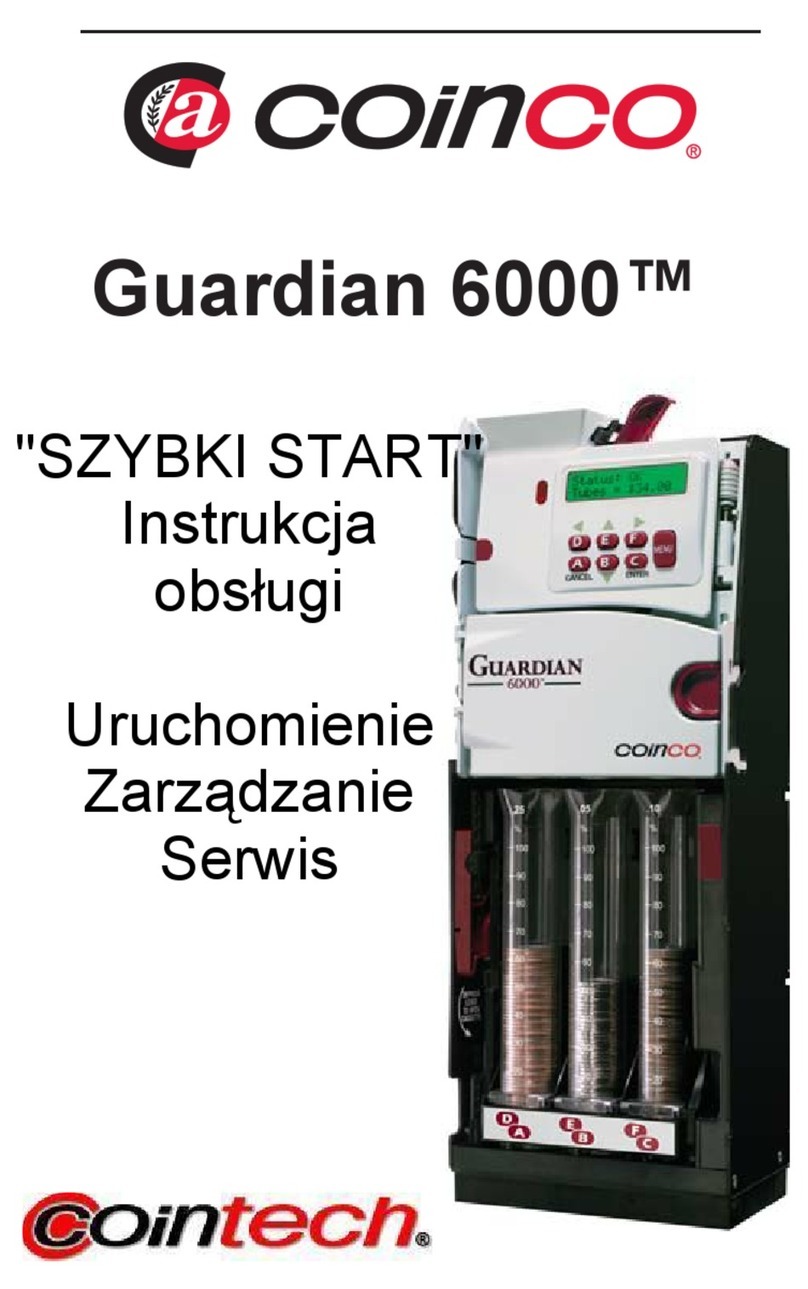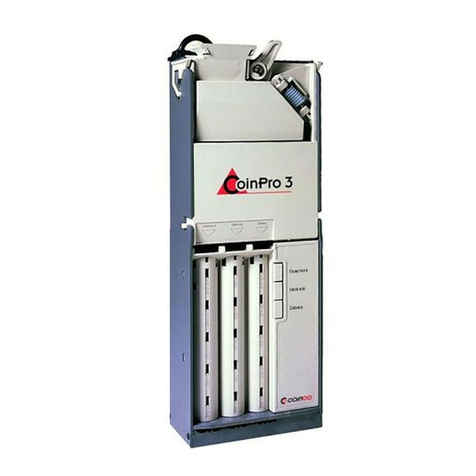
Section 2 –Setup & Installation
2.1 –Setup
NOTICE: THIS MODEL MACHINE IS FOR INDOOR USE ONLY.
Inspect for any connectors or components that may have been dislodged during shipping. The lock and keys for
your changer will be inside the manila envelope along with this manual and other pertinent information. To install
the lock, insert the cylinder into the hole in the middle of the T-handle and push until it stops. Turn the key until
you hear it “snap." Turn the key counterclockwise ¼ turn and remove the keys.
NOTE: The only way to get a duplicate set of keys made is to save the tag that comes with the keys. The ID #
begins with “AC” or “ACC” followed by digits.” If you purchased Medeco locks with your machine the ID will
begin with “7RA” followed by digits.”
CHECKING SHIPMENT: Be sure to check the shipment against the Bill of Lading for shortages. Also, check for
external damage to the packaging. Note any shortages and/or damage to the packaging on the Bill of Lading in
the presence of the carrier and ask the carrier to initial on the Bill of Lading accordingly. Immediately report any
shortages or damage to the packaging to the carrier and American Changer.
TEST: Before permanently installing the changer, do a functional test to verify that there is no shipping damage to
your new changer.
Plug the power cord into a dedicated, grounded 120VAC outlet. The machine is preset to accept $1, $5, $10, and
$20 and dispense 25¢coins (unless otherwise specified at the time of purchase).
Fill each of the coin hoppers with a minimum of 100 coins. On the Main Logic Board, turn the switch on the
bottom right corner “ON.” The rocker switch has an “I” and “O” printed on it. When the “I” is pressed down, the
changer is “ON.”
If the machine does not function properly please contact American Changer’s Technical Support Department at
service@americanchanger.com or 1-888-741-9840.





























